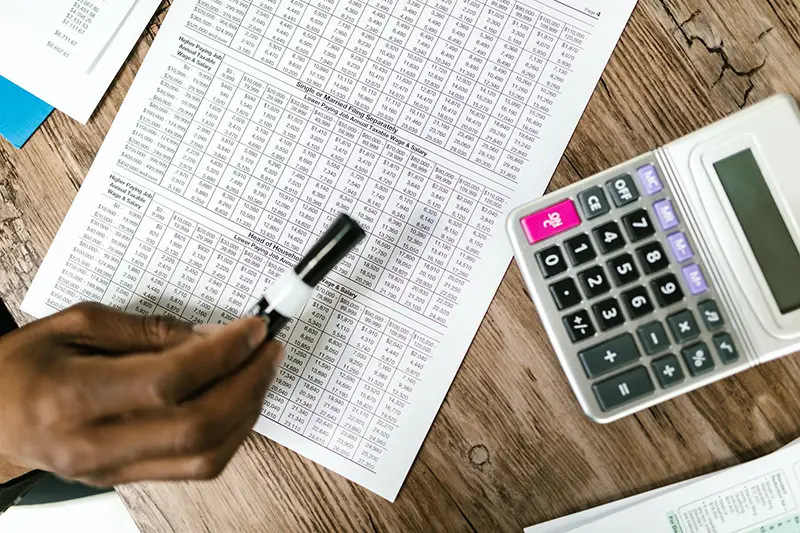Click here to get this post in PDF
What is VAT?
VAT stands for Value Added Tax. Companies who register for VAT add a fixed percentage on to the price of goods or services that they sell, and this is then passed to HMRC.
What are the different VAT rates?
There are several different rates charged for goods and services.
- The standard VAT rate (currently 20%)
- The reduced VAT rate (5%) that applies to goods including gas and electricity for domestic use, energy saving products and some health related products.
- The zero VAT rate (0%) which applies to water, charitable products, printing of brochures and leaflets, books, maps and children’s clothes.
There are also items that are exempt from VAT such as postage stamps, financial services and insurance, and some items that are outside the scope of VAT completely.
The list of VAT rates is published on the HMRC website here: http://www.hmrc.gov.uk/vat/forms-rates/rates/goods-services.htm
Should I register for VAT?
If your annual turnover is above £79,000 or will go over that in the next 30 days, then you must register for VAT. You don’t need to include items that are either exempt or outside the scope of VAT in this calculation. If your annual turnover is less than this, then you do not have to register – but you could register voluntarily. See our Top Tips below to decide whether this would be of benefit to you.
What are the different VAT schemes?
There are several different VAT schemes that you can register for.
Standard VAT Scheme:
Each quarter, you have to pay to HMRC the VAT you have charged your customers less the VAT you have paid on goods or services brought for your business. For example, if you’ve supplied goods charged at £10,000 + £2,000 VAT and have bought goods for £5,000 + £1,000 VAT, then you have to pay HMRC £2,000 – £1,000 = £1,000. Note that this scheme is based on invoiced values – so even if your customer hasn’t paid your invoice yet, you still have to include the VAT in the quarter’s calculation. If your customer never pays the invoice and you write it off as a bad debt, then the VAT can be reclaimed later.
Annual Accounting Scheme:
The estimated amount of VAT for the year is calculated, and you then pay fixed amounts over either 9 months or 3 quarters. At the end of the year, the actual VAT calculation is carried out and you either pay a balancing amount or receive a refund. The scheme is good if you want to be sure of your outgoings – but if your VAT is over estimated then you will pay too much during the year and receive it back in a single payment at the end of the year.
Cash Accounting Scheme:
This works in a similar way to the Standard VAT Scheme, but uses actual payments in the calculations rather than the invoiced values. This scheme is useful if your customers take a long time to settle their invoices as it means that you don’t have to pay the VAT portion until your customer has paid you!
Flat Rate Scheme:
The amount you pay HMRC each quarter is based purely on the total turnover in the month – purchases are not included in the calculation. The VAT is also paid at a lower percentage than the standard VAT rate. Each industry type has a percentage to use – see www.hmrc.gov.uk/vat/start/schemes/flat-rate.htm for details of the different percentages. For example, an accountancy business has a flat rate percentage of 14.5%. During the quarter they carry out work invoiced at £10,000 + £2,000 VAT (the amount of VAT charged remains the same).
The amount due to HMRC at the end of the quarter is £12,000 x 14.5% = £1,740. There is also a 1% discount for all businesses in their first year of operating this scheme, so in the case of our accountancy business, the payment would be £12,000 x 13.5% = £1,620 if they were in their first year.
There are also specialist VAT schemes for retail businesses and businesses that deal in second-hand goods such as antique dealers and used car sales. Please contact us for more details if one of these schemes may apply to you.
What do I have to do if I’m registered?
There are two things that you need to do when you are registered for VAT. The first is to complete a VAT return each quarter (or once a year if you are on the Annual Accounting Scheme). This tells HMRC how much VAT you need to pay, or are due to be refunded. Different businesses operate on different VAT quarters depending on when they registered for VAT. The VAT return must be submitted within a month of the quarter’s end. For example, if the VAT quarter ends on 31st July, the return must be made by 31st August. If you file your VAT return online, then in some cases you have an extra seven days to file. If you’re on the Annual Accounting Scheme then you have two months after the end of the year to submit the return. The second thing you have to do is actually make the payment! Payments are generally due at the same time as the return is submitted. If you pay electronically, you are normally allowed an extra seven days to pay, and if you set up a direct debit then the payment is taken 3 days after this additional seven days.
Top tips
- Although postage stamps are exempt from VAT, if you charge for post and packing as part of a sales contract and itemise it separately, then it is charged at the same rate as the goods being posted.
- If your business doesn’t make many purchases (this is generally service based businesses) then consider the Flat Rate Scheme. It saves on admin and may make you some money!
- If your customers generally take a long time to pay you, consider the Cash Accounting Scheme. You’ll only have to pay the VAT portion when you’ve actually received it.
- If you make a lot of purchases from VAT registered businesses, consider registering for VAT yourself – even if you don’t meet the registration threshold. You’ll be able to claim back the VAT portion of what you’ve been charged. And in some circumstances you can also claim back VAT you paid before you registered (three years for goods and six months for services, providing the goods haven’t been sold or used up yet).
- Consider registering for VAT online and paying by direct debit. You’ll normally get longer to submit the return, and you’ll also get longer to pay – so you keep hold of the money for longer.
About the Author

Vip Patel runs a bookkeeping and accountancy practice based in Watford helping SME’s with their accounting, book keeping, payroll, VAT and tax returns.
Having started and built several businesses over the years, Vip is commercially minded and entrepreneurial in his outlook and clients appreciate the plain and simple, practical advice to getting their finances in order as well has how best to maximise their business.
Vip is a Member of The Institute of Certified Bookkeepers, Member of the British Computer Society and a Chartered IT Professional.


I truly like reading your post, You have such nice valuable information. Thanks for sharing information with us. Keep on sharing Blog like this.